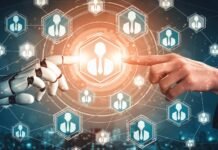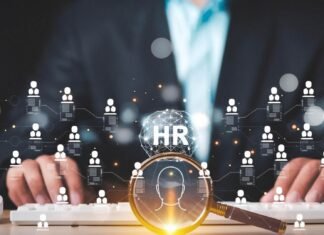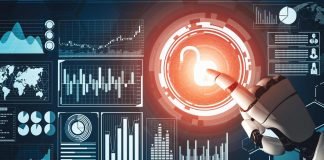Fifteen years ago, the rom-com It’s Complicated gave us plenty of laughs—and a title that, for a while, could just as easily describe the workplace. Between shifting policies, evolving technology, and the never-ending debate over where and how team members should work, workplace complexity became the norm.
But today, HR leaders are ready for a new title—one that reflects clarity, connection, and a workplace that actually works for employees and leaders alike.
Rethinking Work Beyond Deadlines and Tasks
Team members have work to do and goals to accomplish. And, the reality is that most organizations ultimately measure success by production and profits. However, achieving those outcomes depends on more than output—it requires an environment where employees collaborate effectively, stay informed, and feel connected to their organization’s culture. Work today isn’t just about tasks and deadlines; it’s about building a workplace where engagement, productivity, and job satisfaction drive long-term success.
Yet, many employees feel these experiences are lacking. According to the Appspace 2025 Workplace Experience Trends & Insights Report, 85% of employees say their organization could do more to enhance the employee experience. Collaboration and communication ranked as the top areas needing improvement, and despite return-to-office (RTO) mandates, 66% of employees still prefer remote work most days.
For HR leaders, this signals an urgent need to rethink how workplace technology can create more meaningful, connected, and productive experiences—not just facilitate office attendance.
For years, conversations about the Fourth Industrial Revolution focused on automation, AI, and IoT, often emphasizing efficiency rather than experience. However, as these technologies became more widespread, concerns about their potential impact on the workforce also grew.
A recent YouGov study found that 42% of employees who use AI at work worry about job security, while 46% fear reductions in hours or salaries. Meanwhile, digital workplace strategies often overlook frontline workers, who comprise a significant portion of the global workforce. Only 30% of respondents in the Appspace report feel their organization adequately supports frontline teams, highlighting a substantial gap in workplace experience.
HR leaders must drive productivity and engagement while navigating the complexities of AI, automation, and hybrid work, and many organizations are on the right path. According to Forrester, organizations are prioritizing employee experience-focused initiatives in 2025 to revitalize workplace culture and boost productivity. Yet, there is still work to be done.
The solution isn’t just implementing more technology. Creating better workplace experiences requires strategically using technology to foster connection, collaboration, and engagement among all employees, whether they’re in the office, remote, or on the frontlines.
Getting to The Core of Prioritizing the Employee Experience
Companies that successfully integrate technology and the human experience already see the benefits of a more engaged and productive workforce.
One example is Glencore, a global natural resources company with over 135,000 employees and contractors across 35+ countries. Many of Glencore’s employees work in frontline roles—positions that often lack access to timely company news and digital tools.
To close this gap, Glencore implemented a modern intranet designed for frontline and hybrid team members alike. Its intranet, The Core, delivers mobile-first engagement and user-friendly, two-way communication. The result? Stronger workforce connectivity, ensuring employees stay informed, engaged, and aligned with company goals.
Organizations across various industries can apply Glencore’s strategy and leverage digital employee communications solutions to ensure all team members, not just office-based employees, stay connected and engaged.
The Future of Workplace Tech: Smarter and More Human-Centric
The most advanced workplaces won’t chase new technology for the sake of having the slickest office space. Instead, HR leaders will put a culture-first mindset at the center of their technology decisions, ensuring their tools enhance collaboration and engagement without making work harder. Specifically:
- Engagement tools will work like consumer apps because workplace technology needs to be as intuitive and engaging as the tools employees use in their personal lives.
- Frontline-first digital strategies will ensure this vital segment of our global workforce no longer feels disconnected.
- AI will serve its purpose as a workplace enabler, not a disruptor, because intelligent automation should support employees in their roles, not replace human interaction.
When technology serves the employee experience, organizations don’t just improve operations—they create workplaces where people want to be.
What’s Next? HR’s Workplace of Dreams
HR teams have an opportunity to lead the charge in designing more innovative workplaces and desirable destinations for employees. Mandates may bring employees back to the office, but long-term engagement comes from purpose, connection, and meaningful workplace experiences.
The organizations that embrace this human-centric approach—connecting technology, culture, and experience—will be the ones that attract and retain top talent in the years ahead. Or, to borrow from another classic movie—when you build a workplace that genuinely supports employees, they will (gladly) come.
Explore Hrtech Articles for the latest Tech Trends in Human Resources Technology












